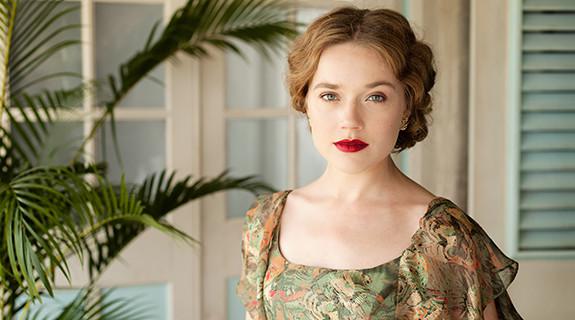In recent years, PBS’ partnership with drama producer Masterpiece has reached new heights, with such productions as Downton Abbey, Sherlock and Wolf Hall scoring both ratings highs and critical acclaim.
With Downton Abbey preparing to enter its sixth and final season this January, PBS is working to build its schedule with other lavish dramas. The latest in these entries is Indian Summers, a nine-episode period piece set in 1932, when Indians were starting to rally for independence from their British occupiers. The drama premieres Sunday, Sept. 27.
“This show includes issues of race and political tension from which we don’t shy away,” says Jim Dreesen, PBS’ vice president of content marketing and audience development. “People expect PBS to offer substantive TV and this is really very meaty in a terribly great, wonderful, entertaining way.”
To get the word out about Indian Summers, PBS is working with some of its previous marketing partners, including the New York Times, 60 Minutes, Jeopardy! and Amazon Kindle. All of those partners offer demographics that align closely with the PBS audience. For this series, PBS also is branching out to some new partners, such as The Economist, HGTV, TNT, Travel & Leisure and targeted podcasts on the Midroll Media network.
“Podcasts seem like a very PBS-friendly environment,” says Jennifer Allen, PBS’ senior director of primetime strategy and advertising. “They reach people who already like long-form content and who are already opting in to these conversations.”
PBS is specifically marketing the drama to India- Americans by promoting the program in the Air India in-flight magazine, Shubh Yatra (“Bon Voyage”) as well as on India West, India Abroad, AsiaTV and Willow TV.
PBS will also take a bit of a big marketing swing by airing local spots in some highly-rated national shows, such as Fox’s broadcast of the 67th annual primetime Emmy awards on Sunday, Sept. 20, and in other big broadcast network premieres.
“We can’t afford to do it nationally but we are running spots in some key markets,” says Allen. “We’re being as resourceful and cagey as we can, and to some extent drafting off the efforts of some of these other networks.”
And of course, Indian Summers is being heavily promoted by the PBS member stations, who remain “a huge part of what makes these launches successful,” says Allen. “They leave no stone unturned to turn out the available audience.”
“If we don’t succeed in convincing stations to get behind these priorities we are dead in the water,” says Dreesen.
Indian Summers takes place just a few years after Downton Abbey comes to a close, so it offers viewers some historical continuity. Just like last year’s The Roosevelts, which turned in huge viewing numbers for PBS, viewers will be able to watch the show across multiple on-demand platforms, including PBS.org.
“If we’re all doing our jobs right, you should hear about this show on multiple platforms before it premieres,” says Dreesen.
But with all of TV now year-round, fall is just another season for PBS to promote. Leading into fall, PBS aired two other big events.
It got a jump start with Big Blue Live, a hybrid between nature documentary and reality program that aired Aug. 31, Sept. 1 and Sept. 2, and gave viewers a close-up look of the annual wildlife migration of humpback, grey and killer whales, great white sharks, seals and otters to the deep Monterey Bay to feast on krill and sardines before heading north.
PBS also re-aired Ken Burns’ Civil War from Sept. 7 to 11 to commemorate the documentary’s 25th anniversary. This spring, PBS will broadcast Ken Burns’ latest documentary about baseball great Jackie Robinson.
Beyond drama, fall has become the time for the PBS Fall Arts’ Festival. This season, the festival has a new host, Gloria Estefan, and it will kick off with a concert: UNITY: A Latin Tribute to Michael Jackson, hosted by Sheila E.
To help promote the festival, PBS will lean heavily on social. “Whenever we look at productions now, we always look at what we can offer on social,” says Kevin Dando, PBS’ senior director of social media strategy and digital communications.. “For everything we do now, social is totally baked in.”
For the fall festival, “we flew out to a lot of the tapings, met with the casts, did live Periscopes and got a lot of video rolling out in connect to the shows,” says Dando. “Social media is great because we can so precisely target the audience for each show.”
Cube art courtesy of PBS
Tags:













































__twocolumncontent.jpg)











